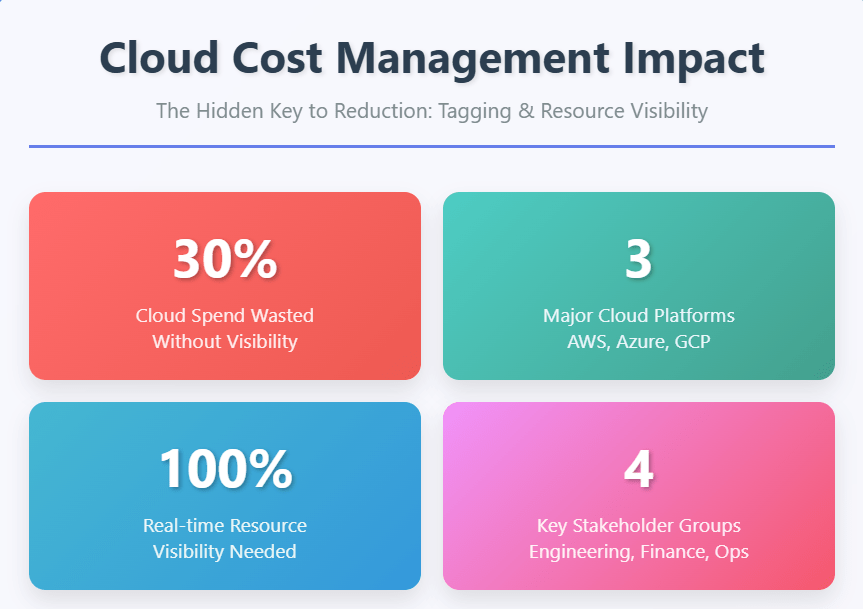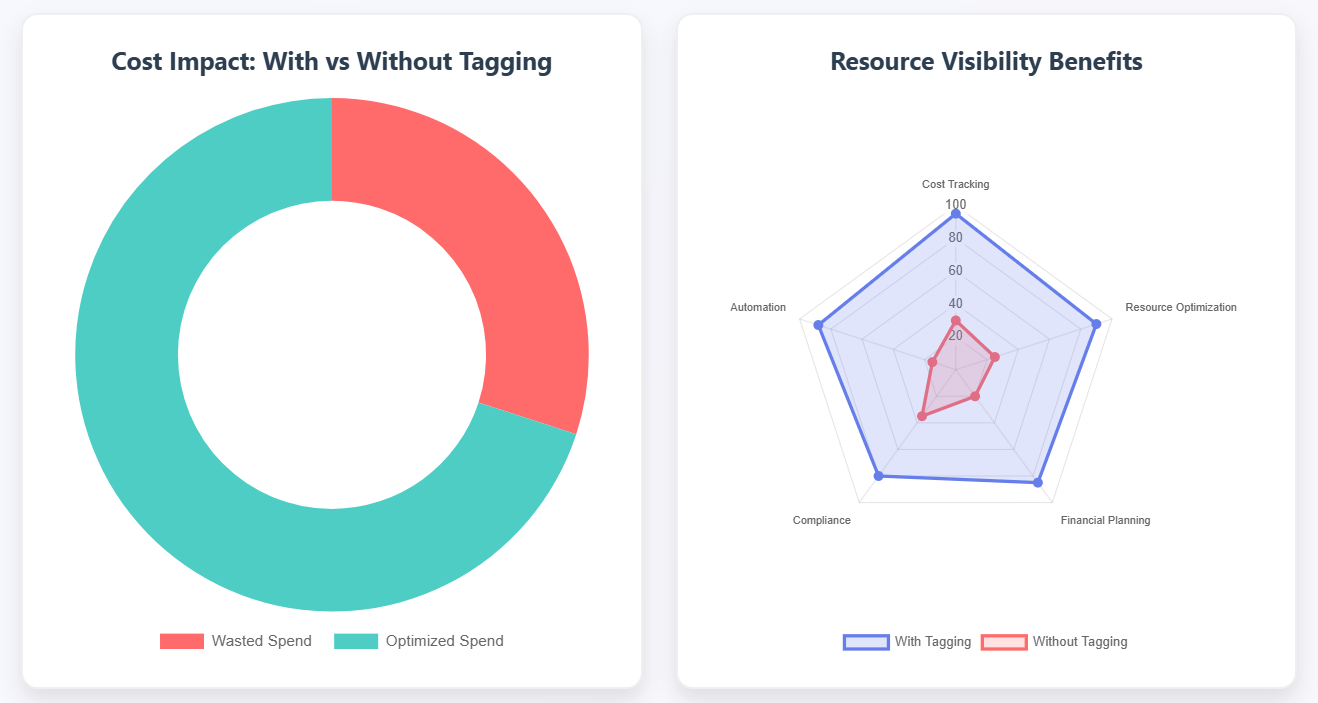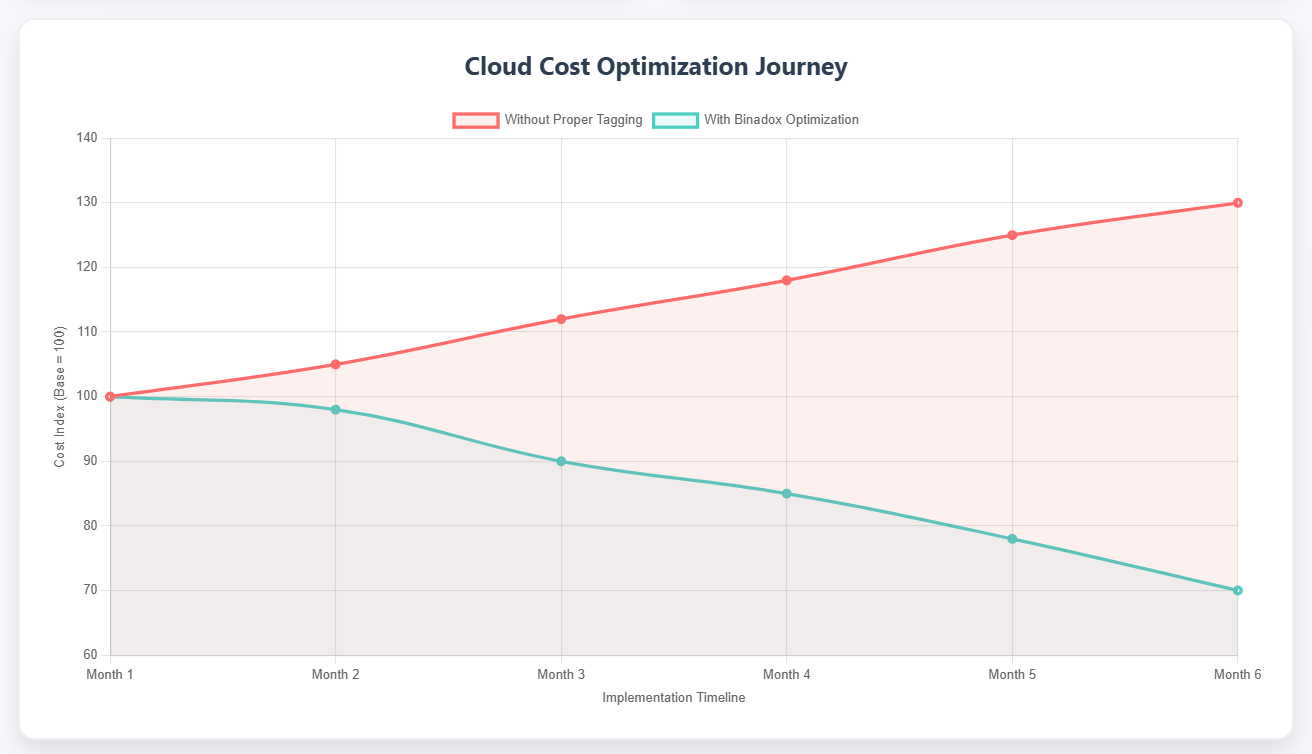
In the rapidly evolving digital landscape, cloud computing has emerged as a foundational pillar for modern business operations. Yet, with this evolution comes an urgent challenge: spiraling cloud costs. Hidden beneath technical configurations and complex billing statements lies a powerful but often underutilized solution—tagging and resource visibility.
When leveraged effectively, these two concepts serve as the cornerstone of intelligent cloud cost optimization, enabling organizations to uncover inefficiencies, allocate resources accurately, and significantly reduce unnecessary spending.

Why Tagging and Visibility Matter in Cloud Environments
Cloud infrastructures—whether AWS, Azure, or GCP—offer unmatched flexibility. However, without a systematic approach to resource categorization, this flexibility often results in chaos. Resources are spun up across teams, regions, and projects with minimal oversight. The result? A fragmented environment with opaque costs and diminished accountability.
Tagging allows organizations to assign metadata (e.g., project name, team, environment, or cost center) to cloud resources. These tags are essential for tracking usage, optimizing workloads, and improving operational efficiency.
Resource visibility ensures that all stakeholders—engineering, finance, and operations—have access to real-time insights into resource consumption and cost distribution.
Together, these elements enable FinOps (Financial Operations) practices and form the groundwork for sustainable cloud cost management.
As businesses scale their operations across regions, teams, and departments, the complexity of managing cloud infrastructure also grows. In this context, tagging acts as a taxonomy framework—helping distinguish between environments like development, staging, and production. This distinction is not only crucial for cost management but also for operational troubleshooting and incident resolution.
According to Binadox’s cloud terminology guide, standardized tagging improves not just cost tracking but also enhances operational clarity. Tagging, when enforced as part of Infrastructure as Code (IaC), ensures consistency and traceability across your environment.
The Cost of Poor Visibility
Without proper tagging and visibility:
- Costs go untracked: Teams can’t identify which projects or departments are consuming cloud resources.
- Underutilized assets linger: Unused or over-provisioned resources may persist unnoticed.
- Financial planning suffers: Forecasting becomes guesswork without clear cost attribution.
In fact, organizations often waste up to 30% of their cloud spend due to poor visibility and untracked resources.
Furthermore, unmonitored growth in resource usage can complicate compliance efforts, increase the likelihood of misconfigurations, and introduce unnecessary risk. Enterprises undergoing digital transformation must be proactive in implementing frameworks for observability that scale alongside their cloud footprint.

Beyond monetary concerns, lack of visibility also hampers strategic initiatives. For instance, when CIOs or CFOs are unable to attribute costs to specific departments or products, it becomes difficult to evaluate profitability or prioritize future investment. Organizations that implement tagging from the outset avoid the technical debt of manual cost aggregation later on.
Binadox: Bringing Order to Cloud Chaos
Binadox is a cloud cost management platform that empowers companies to regain control over cloud and SaaS spending. A key feature of Binadox is its Spend by Tags functionality, which enables you to filter and analyze cloud expenses by team, country, department, or custom-defined tags.
Using Binadox, you can:
- Set up custom B-Tags to track resource usage with granularity.
- View visual dashboards that highlight spending anomalies and budget deviations.
- Identify underutilized resources and receive automated suggestions for rightsizing or decommissioning.
- Create automation rules to enforce tagging policies and clean up untagged or unused assets.

This level of detail equips teams with actionable intelligence to make cost-effective decisions, all while aligning cloud operations with business objectives.
Additionally, Binadox’s integrations with leading cloud platforms and SaaS providers ensure that organizations have comprehensive visibility, whether they are managing compute resources, storage, or licenses across global teams. Its customizable alerts and reporting features also support compliance initiatives and policy enforcement at scale.
Binadox also includes advanced features like the IaC Cost Tracker, which estimates costs for Terraform-based deployments before resources are provisioned. This is particularly useful for teams practicing DevOps or working with CI/CD pipelines where automated infrastructure changes are common.

Best Practices for Tagging and Visibility
To maximize the benefits of tagging and visibility:
- Establish a company-wide tagging policy – Define standard keys (e.g., Project, Owner, Environment) and enforce them across teams.
- Automate tag enforcement – Use platforms like Binadox to flag or automatically tag untagged resources.
- Integrate tagging with cost reporting – Ensure your cost analysis tools use tags to break down spending by team, region, or business unit.
- Educate teams – Make sure all departments understand the importance of tagging for financial accountability.
These practices not only improve cost tracking but also lay the foundation for predictable cloud budgeting and scalable infrastructure growth.
Another best practice involves periodic audits of your tagging system. As projects evolve, tags can become outdated or misapplied. Routine audits ensure consistency, accuracy, and continued relevance of the metadata used for tracking and reporting.
Additionally, consider implementing lessons from remote work adoption by tagging resources associated with remote operations. This visibility helps in cost-cutting decisions during workforce shifts and global transitions.
Tagging and SaaS: A Broader Perspective
While tagging is often associated with IaaS platforms, it’s equally powerful for SaaS spend management. Platforms like Binadox extend tagging capabilities to SaaS subscriptions, enabling centralized visibility across dozens of SaaS applications—from Slack to Salesforce.
Binadox’s License Manager and Renewals Calendar provide additional tools to track usage, monitor license renewal dates, and flag underused licenses for potential cancellation. Combined with tagging, this creates a unified command center for all digital expenditures.
Moreover, SaaS tagging can facilitate security audits, help enforce compliance policies, and assist in the management of offboarding workflows when employees leave the organization. These operational benefits enhance overall IT governance and reduce the likelihood of shadow IT proliferation.
Conclusion: Unlock the Hidden Key
Cloud cost reduction isn’t about cutting corners—it’s about gaining clarity. Tagging and visibility are the hidden key to this clarity. When used effectively, they unlock insights that lead to smarter resource allocation, better financial planning, and ultimately, a leaner cloud infrastructure.
With intelligent platforms like Binadox, organizations can move beyond reactive cost control toward proactive, data-driven optimization. The journey begins with a tag—and ends in savings.
Ultimately, visibility and tagging are about driving accountability and efficiency. Whether your goal is to comply with regulatory frameworks, support decentralized teams, or just trim down cloud bloat, investing in visibility tools like Binadox pays for itself.

